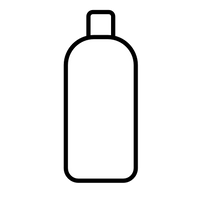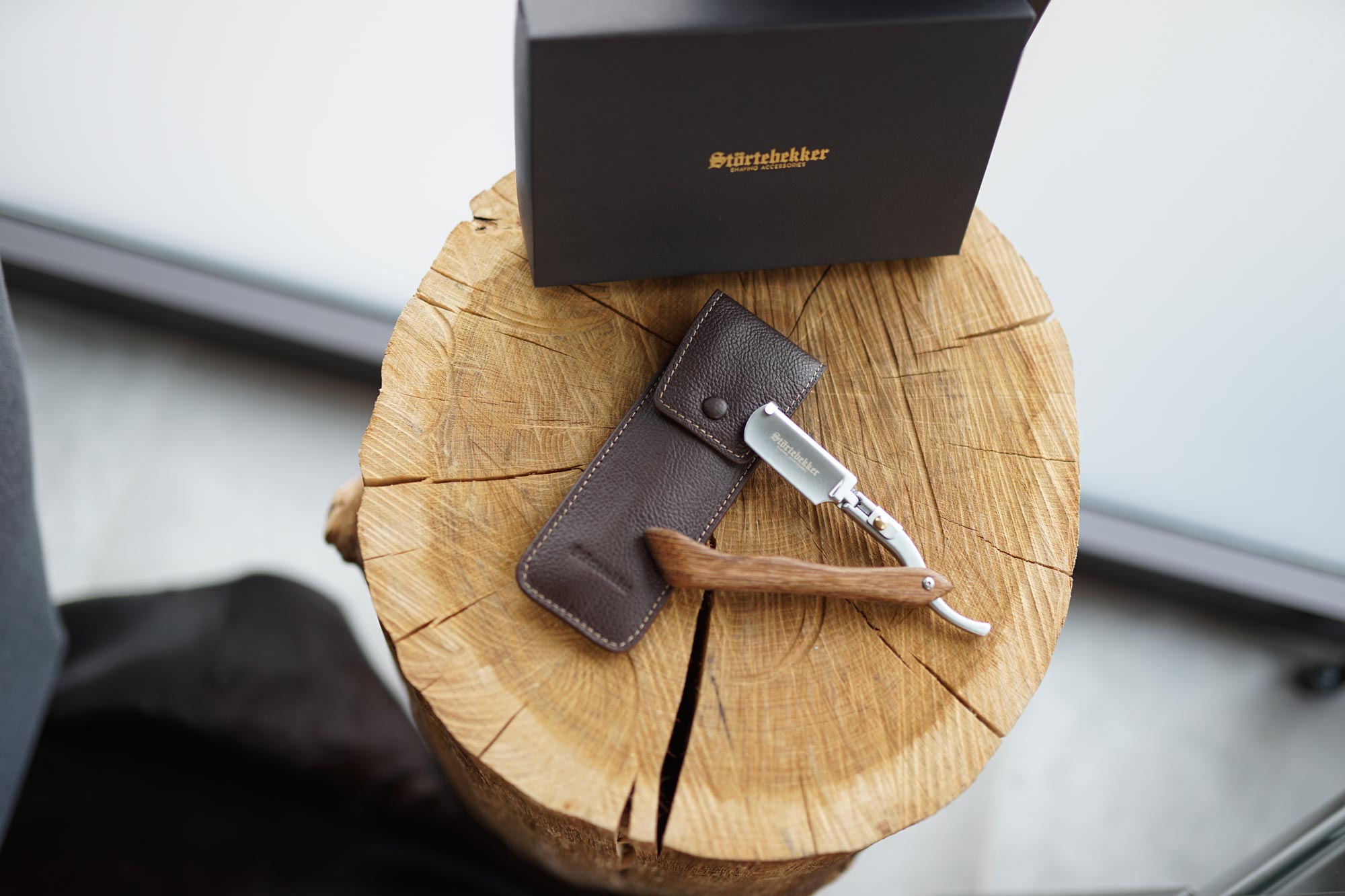Martin is a passionate entrepreneur and barbershop enthusiast. He has delved deeply into the world of shaving and beard care and wants to bring the unique barbershop experience into every bathroom.
To achieve a smooth, beautiful shave, you should keep your razor blades sharp. It is essential to rinse them thoroughly with hot water after each shave.
If you notice that the razor blades become dull after a while, you need to either sharpen the razor with a sharpening stone or replace the blade. You can read here how often you should replace the razor blade.
In addition to razors with replaceable blades, there are also razors with fixed blades - regular sharpening of the blade is essential here.
This brings us to an important topic: Many men do not trust themselves to properly sharpen the razor. However, it’s not rocket science.
Why is it so important to sharpen a razor?
Residues of shaving soap, skin particles, and small hairs clog the razor and make it dull over time. Simply cleaning with hot water is no longer sufficient to keep the razor blades sharp.
Dull blades can cause significant damage to your skin:
- Irritations,
- Redness,
- Razor burn (small tip: Here’s how you can avoid razor burn)
- Razor bumps (and here too, there are tips on how you can avoid razor bumps)
- and small injuries.
Therefore, it is important to regularly replace or, if that is not possible, sharpen with a suitable sharpening stone (for example, a water stone or a diamond sharpening stone).

Sharpening or Stropping a Razor: What’s the Difference?
There are different techniques. One distinguishes between sharpening and stropping a razor.
- Technique and tool are different for each procedure.
- The timing of when you strop and when you sharpen the razor is also different.
A stylish razor with a replaceable blade and high quality can be found in our department for shaving products.
Stropping and Sharpening a Razor: A Guide
Let's start with stropping: As the word suggests, you pull the blade at a sharp angle across a leather strap. The blade sharpens through contact and abrasion with the leather.
Hanging Strop, Paddle Strop, or Tension Strop?
For the stropping procedure, you have various leather straps to choose from.
- Hanging Strop: It is well-suited for daily maintenance or daily stropping of the blade. You attach it to a hook on the wall - it "hangs". You stretch it from below with one hand and strop the razor by pulling it from top to bottom.
- Paddle Strop: Here, the leather is attached to a piece of wood, and you strop the razor by pulling it over. Since the strop is firm due to the wood, you can apply a bit more pressure. This variant often helps beginners as they do not have to hold and tension the strop themselves.
- Tension Strop: Here, you create the tension in the leather yourself, which requires a bit more practice. Therefore, this strop is more suitable for experienced users.

How to Strop a Razor: How to Use a Strop?
To strop the razor, you pull it at a flat angle - always towards the back of the razor, never towards the blade! - across the strop and repeat this about 20 times.
Ideally, the leather strop is used regularly before shaving. This way, you always approach the shave with an optimally sharp blade.
How to Properly Sharpen a Razor?
Now, let’s discuss sharpening the razor with a replaceable blade - feel free to check out our razors. For this, you use a sharpening stone or a strop with a sharpening layer. In the latter case, one side is equipped with a special sharpening layer. The technique is the same as when stropping.
Pull the razor blade flat across. Since the resistance from the stone or sharpening layer is higher, the blade is sharpened more intensely. The metal becomes slightly roughened through sharpening. Therefore, you should never perform this procedure directly before a shave. The razor should rest for at least 24 hours after sharpening.
Before shaving, pull the blade over a leather strop once more to smooth the edges.
What Grit is Best for Sharpening?
When sharpening, you use grit values between 1000 and 8000. A high grit value is recommended if you want a particularly sharp edge. With an 8000 grit value, the blade achieves a finer sharpness than with a lower grit value.
If you only want to maintain the razor, use a lower grit value. You can use higher grit values for a more intense sharpening.
Alternative to Sharpening Stones: Sharpener for Razors
As an alternative to sharpening stones, there are also razor sharpeners. Some come with integrated stropping surfaces or multiple sharpening steps. They can often be used to quickly and efficiently sharpen the razor blade.
Generally, razor sharpeners are a good option if you don’t want to deal with the hassle of sharpening stones.
But don’t forget: Sharpening stones and sharpeners require practice and should be carefully used.
Summary: Proper Care for a Razor Blade
The razor blade is an essential tool in your shaving routine. Whether you use a blade with a sharpener or a strop, care for the blade is crucial.
- After every shave, clean the blade with hot water.
- Strop daily for the best results.
- Sharpen every few weeks to maintain sharpness.
- Allow 24 hours of rest after sharpening.
With these tips, you’ll ensure a clean, smooth shave and extend the life of your razor blades.
 Free shipping from
49€
Free shipping from
49€
 100 days return
100 days return
 Festes Shampoo
Festes Shampoo Body Bar
Body Bar Handsoap
Handsoap Pomade
Pomade Gesichtspflege
Gesichtspflege Deo
Deo Hair & Body Wash
Hair & Body Wash Haar Booster
Haar Booster Safety razor
Safety razor Straight razor
Straight razor Shaving soap
Shaving soap Razor blades
Razor blades Shaving accessories
Shaving accessories Beard care
Beard care Beard styling
Beard styling



















